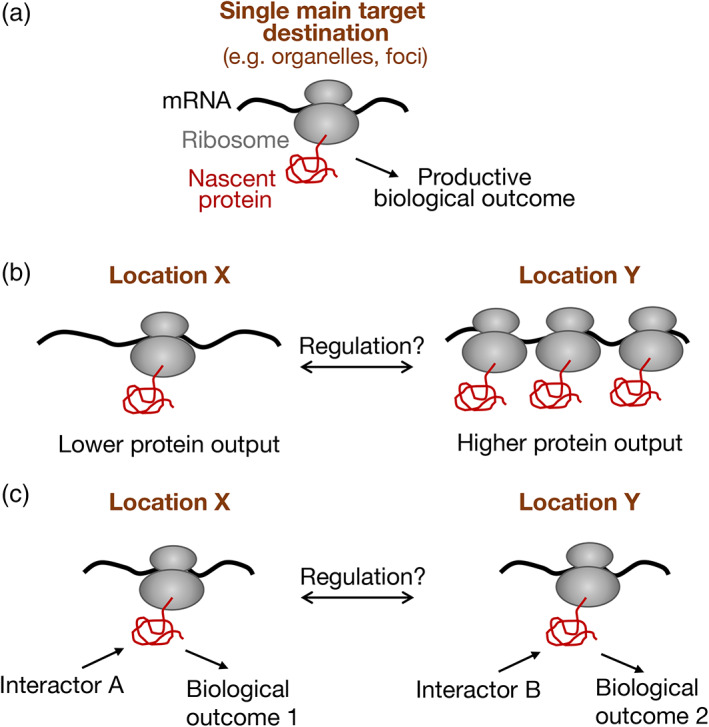FIGURE 2.

Biological outcomes upon translation of localized mRNAs. (a) For mRNAs with a single main target destination, translation at the target site can act as a fail‐safe mechanism that ensures a productive biological outcome. For example, mRNA targeting to the endoplasmic reticulum, or on the surface of mitochondria, ensures proper maturation of the encoded polypeptide and its incorporation into the correct organelle. In an analogous way, concentration of mRNAs encoding partner subunits into cytoplasmic foci allows co‐translational interactions that promote correct assembly of multiprotein complexes. Absence of such a mechanism has deleterious consequences. (b) The presence of an mRNA at different cytosolic locations, X and Y, can affect the efficiency of its translation and the corresponding protein output. For example, the β‐actin and ribosomal protein mRNAs exhibit increased translation when found at protrusive lamellipodial regions of migrating cells. Altering the fraction of mRNA distributed between sites X and Y could be used to regulate cognate protein levels. (c) Translation of an mRNA at different cytosolic locations, X and Y, can tune the functional potential of the encoded polypeptide. For example, the RAB13 mRNA, which encodes a protein that can engage with multiple interacting partners (either activators or effectors), can be translated in either peripheral or perinuclear regions. Translation at a particular cytosolic location introduces the newly synthesized polypeptide into a local network of potential interactors, favoring certain interactions over others. Altering the fraction of mRNA distributed between sites X and Y can thereby shift the balance between biological outcomes
